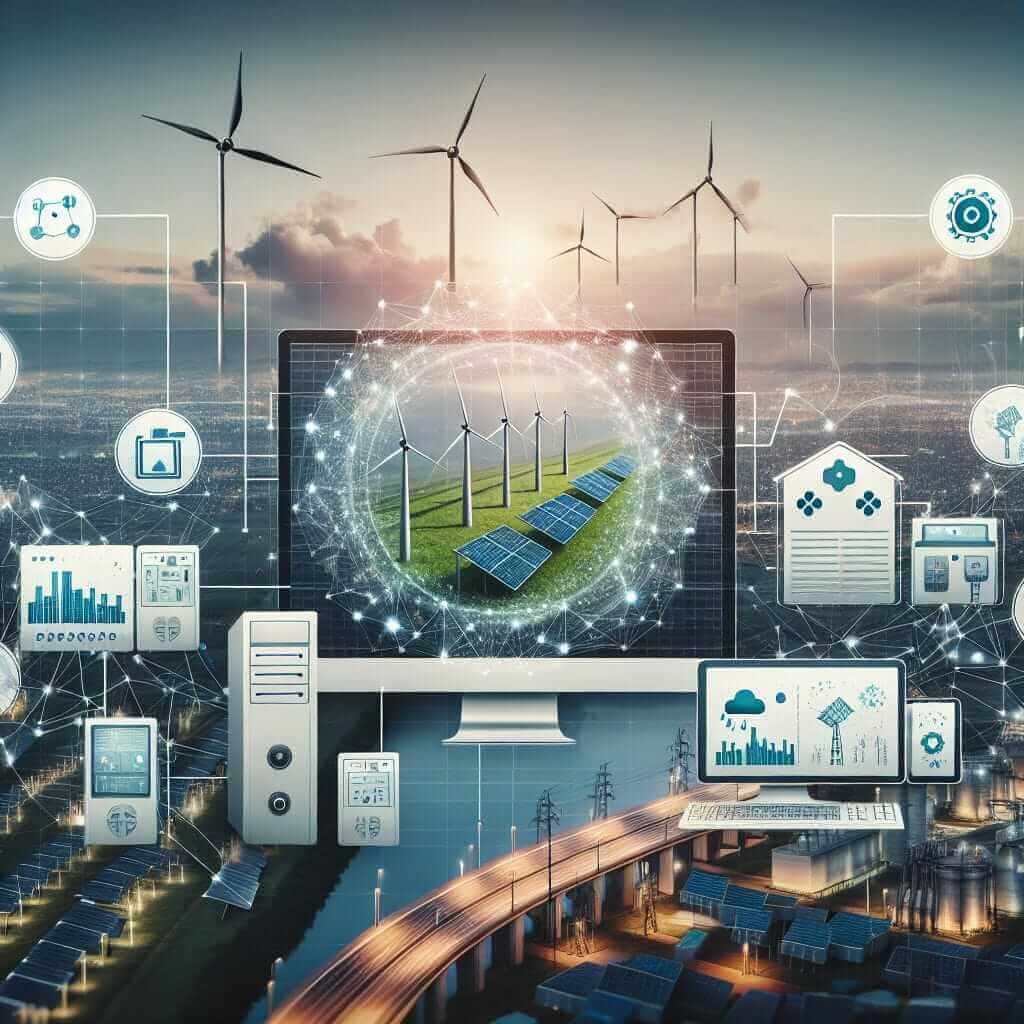The Reading section of the IELTS exam is a crucial component, assessing your ability to comprehend and analyze academic passages. Topics related to “Technological Innovations in Renewable Energy Integration” are becoming increasingly relevant given global shifts towards sustainable energy solutions. Historically, the IELTS exam has included passages on technological advancements and environmental topics, suggesting a high possibility for future appearances of similar themes.
Nội dung bài viết
- Main Content
- Practice Reading Passage: Technological Innovations in Renewable Energy Integration
- Technological Innovations in Renewable Energy Integration
- Questions (Medium Text)
- Multiple Choice
- True/False/Not Given
- Answer Key with Explanations
- Common Mistakes
- Vocabulary
- Grammar Focus
- Tips for High IELTS Reading Scores
Main Content
Practice Reading Passage: Technological Innovations in Renewable Energy Integration
Technological Innovations in Renewable Energy Integration
Renewable energy integration is fundamental to achieving sustainable energy systems. Technological advancements are crucial in facilitating the transition from fossil fuels to renewable energy sources like wind, solar, and hydro. The integration of these renewable energy sources has seen revolutionary innovations in grid management, energy storage, and energy efficiency.
One significant innovation is smart grid technology. Smart grids utilize digital communication and automation to optimize the delivery of electricity, enabling real-time monitoring and management. This capability improves the efficiency and reliability of power distribution, ensuring a seamless integration of intermittent renewable energy sources.
Energy storage solutions, such as advanced batteries, also play a pivotal role. Technologies like lithium-ion batteries and emerging systems such as solid-state batteries provide the necessary storage capacity to balance supply and demand, mitigating the variability of renewable energy sources. Large-scale implementations of these technologies ensure that excess energy produced during peak generation periods can be stored and utilized during low production times.
Moreover, advancements in grid management include the development of microgrids. Microgrids are localized grids that can operate independently or in conjunction with the main grid. They enhance energy resilience and reliability by allowing for localized control and integration of renewable energy sources. This innovation is particularly significant for remote or disaster-prone areas, providing them with stable and reliable power.
Emerging trends like blockchain technology are also influencing renewable energy integration. Blockchain can facilitate decentralized energy trading among consumers, enabling a more democratic and transparent energy market. This technology supports peer-to-peer energy transactions, ensuring that renewable energy can be bought and sold seamlessly within local communities.
Overall, these technological innovations are steering the global energy landscape towards a more sustainable and resilient future.

Questions (Medium Text)
Multiple Choice
-
What is the primary purpose of smart grid technology?
- A. To reduce the cost of renewable energy
- B. To optimize the delivery of electricity
- C. To increase fossil fuel consumption
- D. To eliminate the need for energy storage
-
How do advanced batteries contribute to renewable energy integration?
- A. By producing electricity
- B. By balancing supply and demand
- C. By decreasing energy production
- D. By reducing energy efficiency
True/False/Not Given
-
Smart grids can only operate within a localized area.
- True
- False
- Not Given
-
Blockchain technology in energy trading promotes a centralized energy market.
- True
- False
- Not Given
Answer Key with Explanations
- B. To optimize the delivery of electricity – The passage states that smart grid technology utilizes digital communication and automation to optimize the delivery of electricity.
- B. By balancing supply and demand – According to the passage, advanced batteries provide the necessary storage capacity to balance supply and demand.
- False – The passage notes that smart grids enhance the efficiency and reliability of power distribution, but does not limit their operation to localized areas.
- False – The passage explains that blockchain technology supports decentralized energy trading, contrary to a centralized market.
Common Mistakes
- Misinterpreting the purpose of smart grids as only localized systems.
- Confusing the role of storage solutions in balancing supply and demand with production roles.
Vocabulary
- Intermittent (adj): /ˌɪntəˈmɪtənt/ – occurring at irregular intervals; not continuous or steady.
- Resilience (noun): /rɪˈzɪlɪəns/ – the capacity to recover quickly from difficulties.
- Mitigate (verb): /ˈmɪtɪɡeɪt/ – to make less severe, serious, or painful.
Grammar Focus
- Future Continuous Tense: Useful for describing ongoing actions in the future.
- Structure: Subject + will be + present participle (verb + ing)
- Example: “The technology will be influencing energy markets significantly.”
Tips for High IELTS Reading Scores
- Practice regularly with diverse topics to enhance comprehension skills.
- Skim the passage first to get the main idea, and then read the questions carefully.
- Use context clues to infer the meaning of unfamiliar words.
- Time management is crucial; allocate your time wisely across different sections.
For further reading, visit our detailed articles on related technological advancements in energy at:
By integrating these strategies and enhancements in your study plan, you will be well on your way to achieving a high score in the IELTS Reading section.